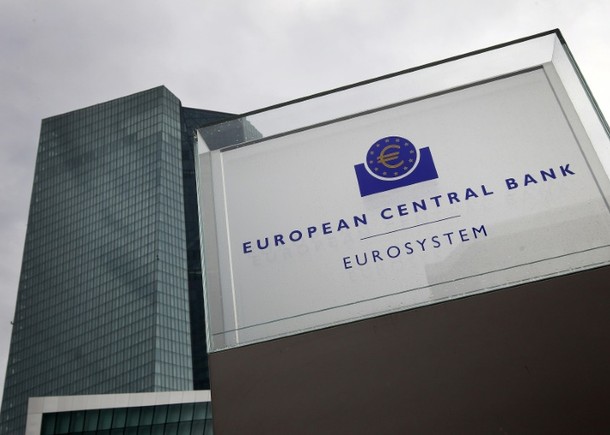European Central Bank governors mulled sending a stronger signal of confidence in the eurozone economy last month as a hint at a possible roll-back of its easy money policies, but decided against it for now, accounts released Thursday showed.
Financial markets are currently on high alert as to any possible signals about when the ECB might begin “tapering” or rolling back a range of unprecedented emergency measures designed to prop up the single currency area’s crisis-battered economy, AFP reported.
And ECB watchers minutely monitor the slightest changes in language in all of the central bank’s communications.
At a policy meeting in the Estonian capital of Tallinn last month, the ECB’s governing council voted to remove a reference to a so-called “easing bias” from the bank’s regular communications, minutes of the meeting revealed. An “easing bias” is a signal to the markets that the ECB could lower interest rates from already historic lows if needed.
Governors also considered dropping a similar message that it could further ramp up its bond-buying scheme known as quantitative easing, if needed. Under the program, the ECB currently buys €60 billion ($68.3 billion) of bonds every month.
But in this case, they decided to retain the reference, at least for now, the minutes revealed. “The assessment of the prospects for a sustained adjustment argued for patience, as the inflation outlook remained vulnerable to a premature tightening of the monetary policy stance,” the minutes stated.
“As the economic expansion proceeded and if confidence in the inflation outlook improved further, the case for retaining this bias could be reviewed,” the minutes continued.
Stubbornly Low Inflation
Low interest rates and mass bond-buying are designed to pump cash through the financial system into the real economy, driving growth and encouraging inflation towards the bank’s target of just below 2%.
They were introduced when the ECB feared that the single currency area might slip into deflation, a threat which the bank now sees as mostly dispelled.
Nevertheless, inflation in the 19-nation eurozone remains stubbornly low even as economic growth has crept up, encouraging the central bank to stick to its stimulus measures.
At the June meeting, ECB president Mario Draghi downgraded the bank’s inflation forecasts for the coming years.
Meanwhile, ECB governors are cautious about tapering, or unwinding, the bank’s easy-money policies too quickly.
Financial market reactions to higher interest rates or the ECB quitting bond markets could undermine the recovery just as it begins to gather pace.


